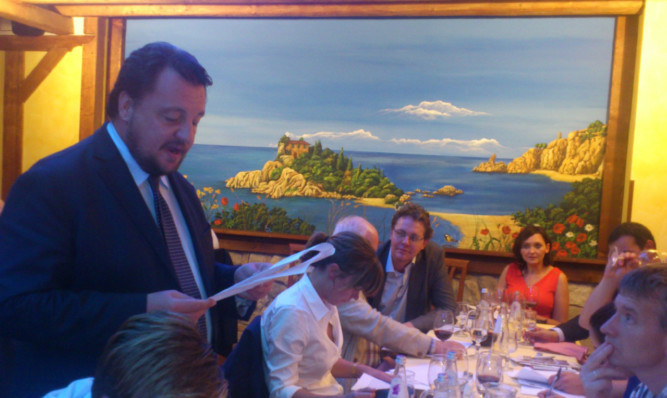There are some similarities between the agricultural sectors in Scotland and the Lombardy region of northern Italy.
Farming in both countries employs just under 2% of the population, is very diverse, and takes place in the background of an industrial and urban economy.
In the case of Lombardy the region is dominated by Milan and its satellite towns, and the land varies from alpine around the Italian lakes right down through the fertile and flat upper Po valley.
The surprise is that it also has an independence movement, and that regional minister for agriculture Gianni Fava the equivalent of Scotland’s Richard Lochhead represents the separatist party.
Lombardy is not only industrially dominant, it is very agriculturally productive.
The region produces 7.2 billion euros of economic value from its crops and livestock, and 42 % of Italy’s dairy produce and the same percentage of its rice crop.
Put simply, the Lombard separatists believe they carry the rest of the country economically, and that this northern hive of economic activity would be better off on its own.
Speaking in Milan to a group of agricultural journalists from around the EU, Mr Fava said the four most economically important regions in the EU or the ‘Four Motors for Europe’ as they have been styled are Baden-Wurttemberg, Rhone Alpes, Catalonia and Lombardy.
Catalonia is of course also so keen on independence that it plans to hold an unofficial independence referendum in coming weeks. It is little wonder, then, that the journalists and Lombards themselves were more than interested to hear how the Scottish referendum had played out.
Given the enormous ramifications a Yes vote in Scotland would have had, the informal reaction among EU Commission officials and politicians in Milan at the Council of Agricultural Ministers meeting is one of enormous relief.
The eyes of the EU were focused intently on Scotland in recent weeks.
As to whether an independent Scotland would have been able to gain EU membership, opinions here are split.
The consensus, if there is one, is that membership would have been granted at some time using some as yet undevised and convoluted political mechanism.
It would take time, however, and Spain would have been at the forefront of efforts to block the move.
With a Lombard separatist movement also rumbling in the background, Italy would also be on its guard.
Meanwhile, it was obvious from listening to the regional minister for agriculture that he has priorities, and many of them are to do with protecting and developing the region’s 31 PGI (Protected Geographical Indication) products.
Scotland has a handful including Scotch Beef, Scotch Lamb and Arbroath Smokies, but here in Lombardy these PGIs are backed up by another 243 certified traditional agri-food products and 42 Denominations of Origin wines.
Among the food products salami and hams are to the fore, including Parma and San Daniele hams.
There are also 13 cheeses and dairy products and two olive oils.
Mr Fava is not only proud of these designations, he is prepared to spend a large proportion of the region’s EU-funded Rural Development Programme on developing them.
Some 320m euros of the 2015-20 fund will be used to promote innovation.
Lombardy, he was delighted to say, had gained a larger share of the EU RDP funding than previously.
However, he has to spend too much of his time acting as a policeman to protect these PGI and certified-origin foods and drinks.
The world is apparently awash with “lookalike and Italian sounding” products, with the total value many times that of the genuine articles.
“This has resulted in unfair competition and genuine risks for food safety as well as massive economic reputational damage across our agri-food sector” he said.
Only international action would stamp out the fraudulent practices. The culprits were mostly but not exclusively from non-EU countries, and the targets were mainly products from France, Spain and Italy.
